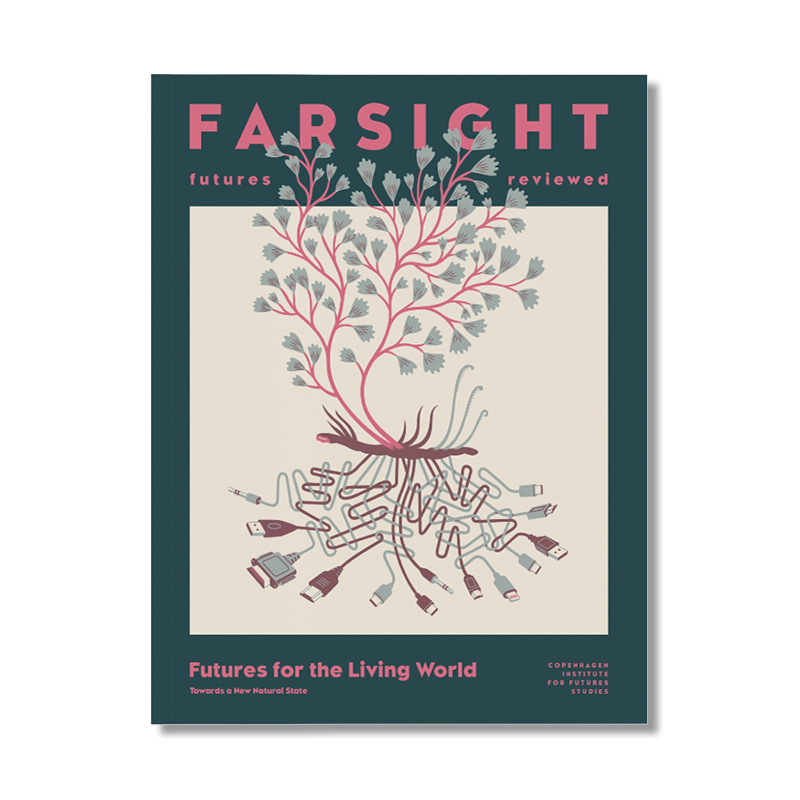
In turn, we use cookies to measure and obtain statistical data about the navigation of the users. You can configure and accept the use of the cookies, and modify your consent options, at any time.

Eco-psychologist Pella Thiel champions a vision of the future where forests, rivers, lakes and other parts of the living world are afforded legal rights on par with those given to humans. It is an idea that may have seemed outlandish to many merely a decade ago, but which is now gaining momentum across the world, with courts having recognised the legal rights of nature in the United States, Ecuador, Bolivia, Brazil, India, New Zealand, and Colombia. Pella Thiel is a knowledge expert in the UN Harmony with Nature initiative, and co-founder of Swedish hubs of international networks like Swedish Transition Network, End Ecocide Sweden and Save the Rainforest Sweden. We met with her to learn more about the legal revolution she is a part of, which seeks to fundamentally restructure how we relate to the ecosystems that we depend on.
‘Rights of nature’ is probably an alien concept to most people, so let’s start with the basics. When and where did the movement get started, how far has it come today, and how did you get involved with it?
It all begins with the idea that all living beings have the right to exist, and that this right can be upheld by law. It’s an idea that stretches back 50 years, to a seminal book titled Should Trees Have Standing? published by the American law professor Christopher Stone. In the book, Stone plays with what he calls the ‘unthinkable idea’ that our legal systems, if we wanted them to, would be perfectly capable of integrating trees, flowers, lakes, and rivers as legal subjects. This idea really took off politically after the turn of the millennium. The first legal case came in 2006 in Tamaqua Borough in Pennsylvania, when the Borough Council used ‘rights of nature’ law as grounds to ban companies from dumping toxic sludge in the community. Another big breakthrough came in 2008 when Ecuador included ‘rights of nature’ in the country’s constitution. Two years later, following the COP15 climate summit in Copenhagen in 2009, Bolivian president Evo Morales – referring to the ‘failure of Copenhagen’ – invited the world to come to Bolivia, where a Declaration on the Rights of Mother Earth was drafted. Unfortunately, this coincided with the eruption of the volcano Eyjafjallajökull in Iceland and the subsequent halting of international flights, which meant that very few European decisionmakers were able to attend.
I first came across the concept a few years later, and I remember thinking that this was an important and powerful idea – but also one that was far removed from the discourse at the time. I remember thinking that this was something I could work with my whole life and not see any change at all. I can already see now that it didn’t work out that way. The idea, and the movement behind it, has really gained momentum, especially in the last few years.
Why did ‘rights of nature’ first take hold in countries with large groups of indigenous communities?
It’s no coincidence, as the idea is closely aligned with how indigenous people view the world, including the humans who co-inhabit it, as a living whole. In Latin America, indigenous peoples have political influence, so it’s not strange that this is where the movement got started first. The same goes for New Zealand, where the Mãori people have had successes as well.
To me, the strength of the idea is that it connects with a different, more ancient worldview which is shared by indigenous peoples from Alaska to the Amazon and Australia, while also being perfectly translatable to modern institutions. Technically, it’s not difficult to see how a lake could have rights in the same way that a corporation can. The fact that corporations have rights make them very powerful and means that they tend to take precedence over the living world.
The landmass of your native Sweden is two-thirds woodland and forestry is a huge industry. Do you get a lot of push back on your work there?
When we say that two-thirds of Sweden is woodland, it masks the fact that most of this consists of plantations rather than forests, and that the mean age of trees in Sweden is steadily decreasing. So, even if we wanted to, we wouldn’t be able to continue cutting down trees to keep up with demands from the global market.
We also have this idea in Sweden that everything is fine here, that we treat nature well, and that we are pioneers in sustainability. This, I think, is simply not true. We, like the rest of the world, are brutal in our use of nature because we too are caught up in the idea of boundless growth, which is at odds with living on a finite planet.
On the other hand, we do have the knowledge that forestry based on trees being members of a forest – a living whole ecosystem – while also being used for timber and other products is perfectly possible. And that’s where ‘rights of nature’ comes in as a framework that can steer us in another direction. It seeks to challenge this industrial view of nature and the view of forests as nothing more than resources to be tapped. But ‘rights of nature’ is still a fringe idea here and not yet considered a threat to forestry. So, no pushback yet!
What does a charter of rights of nature look like? How would it read and what kind of rights would need to be in there?
A few years back, we [Rights of Nature Sweden, ed.] made a parliamentarian motion in collaboration with members of the Swedish Green Party, which sought to include ‘rights of nature’ in the Swedish constitution. It includes proposals for guaranteeing nature – ecosystems, natural communities, and species – the right to exist, thrive, regenerate, evolve, and be restored. It also includes proposals to guarantee the freedom to exercise, enforce, and defend these rights and freedoms.
The way we chose to frame it is very similar to the language used in the constitution of Ecuador. It really turns how we view law on its head, because we are used to seeing ourselves as separate from the rest of the living world, with the right to dominate and control our surroundings. The idea that everything that is living, not just humans, has the right to live and exist, means putting humans back into the living whole. We seek to make law a tool for regulating relationships, not just between humans, but between all members of the living world.
This legal revolution is kind of an emergent space, so it takes different shapes in different contexts. In the US, development of local ordinances has been used to protect ecosystems from brutal practices of extraction and pollution. In other countries like Colombia and Bangladesh, courts have acknowledged rights for ecosystems by elevating them to legal personhood. In Bangladesh, the supreme court has ruled that all rivers have rights.
The notion of acknowledging the rights of nature is often met with unease, as it is perceived as conflicting with human rights. But human rights are totally dependent on healthy ecosystems. In October last year, the Council of Human Rights at the UN adopted the right for humans to a healthy environment, which was an important step that really helped shape the conversations happening internationally today. But it’s not enough, and what we’re proposing is something quite different. If clean water and food are human rights, then in order to respect those rights, we have to also say that the living systems providing us with our basic needs have rights as well. This is transformational, because the culture that we live in has the idea of nature as a mere resource at its core, and this needs to change.
The more we learn about the interconnectedness of ecosystems – including trees’ ability to communicate and organise via underground fungal networks – the more we understand that we can’t remove the different components at will without risking damage to the whole. Has the new knowledge and research coming out in recent years made it easier for you to push the ‘rights of nature’ idea?
Definitely. When I studied biology, the idea of a forest as a community and a conscious whole wasn’t on the curriculum. This makes me hopeful because it makes me wonder what else we don’t know yet.
In a way, it’s getting back to basics. Indigenous cultures have always maintained a respect and reverence for the living whole. Those parts of the world dominated by the worldview of the Enlightenment – which gave rise to the idea that we can understand the world by picking apart its components and studying them individually – are now having to readjust. Reductionism has blinded us to the fact that all pieces exist and are defined by their relationship to each other. I think it’s actually very exciting to be alive in a time where we rediscover this knowledge, even though it’s happening the 11th hour when we are doing so much damage.
Does this leave you optimistic for the future?
Yes and no. On one hand, we are seeing a lot of destruction and suffering, and there is no denying that we are in the midst of an ecological crisis which is an existential crisis for humanity as well. On the other hand, I have faith in the unique ability that humans have for imagination and creativity. I think that we have to use those faculties to do what Christopher Stone phrased as unthinkable – but which is now becoming thinkable, indeed necessary.
As a response to the crisis we find ourselves in, some people become misanthropic and start thinking that since humans are so destructive, perhaps it would be better if there were fewer of us, or if we weren’t here at all. I think that the challenge we are facing now necessitates that we prove to ourselves and all our co-beings that humans can be a healthy part of the living community, that we can be a regenerative species and not just a degenerative species. I think that’s perfectly possible, which is why I remain hopeful.

This is an article from “Futures for the Living World”
Get your copy here
